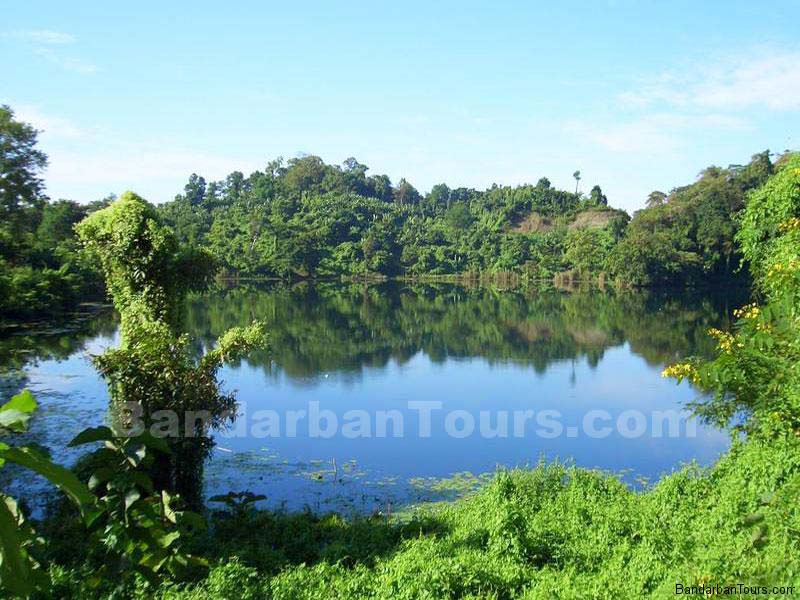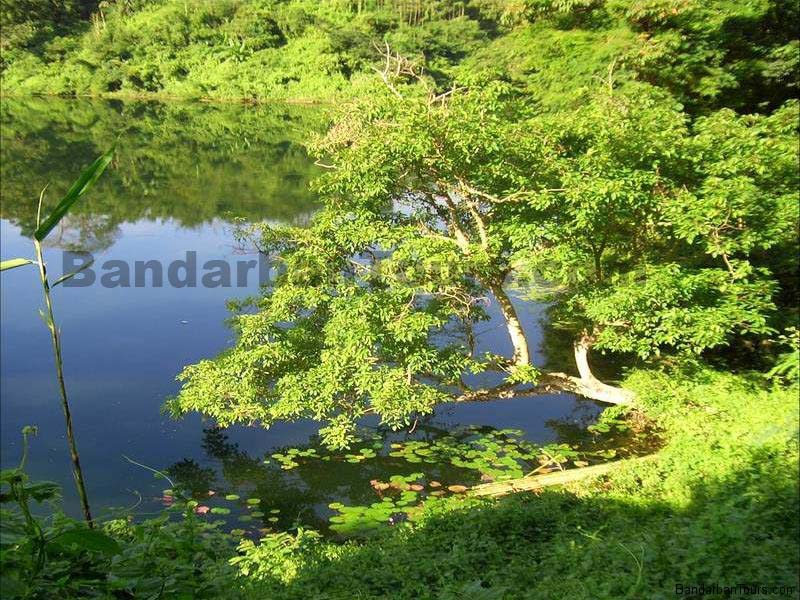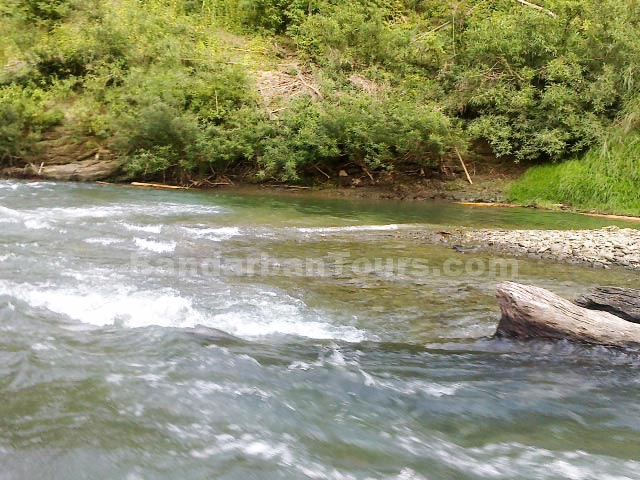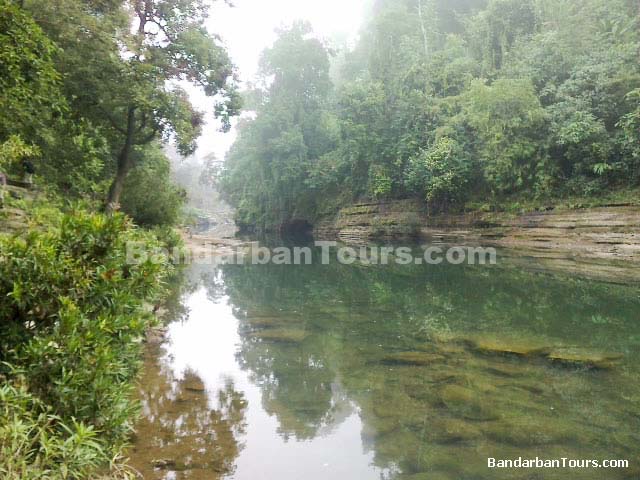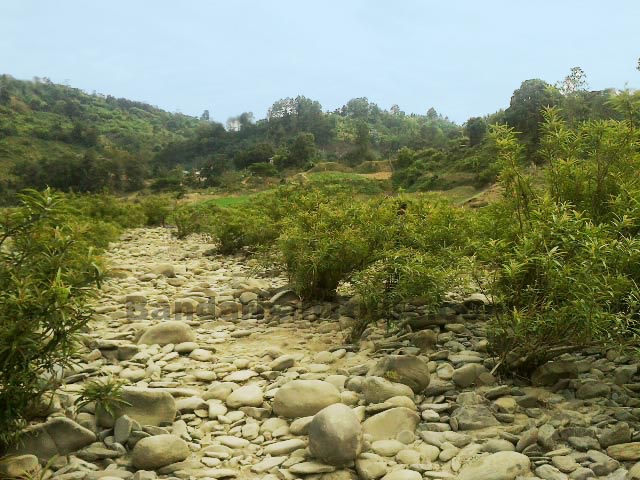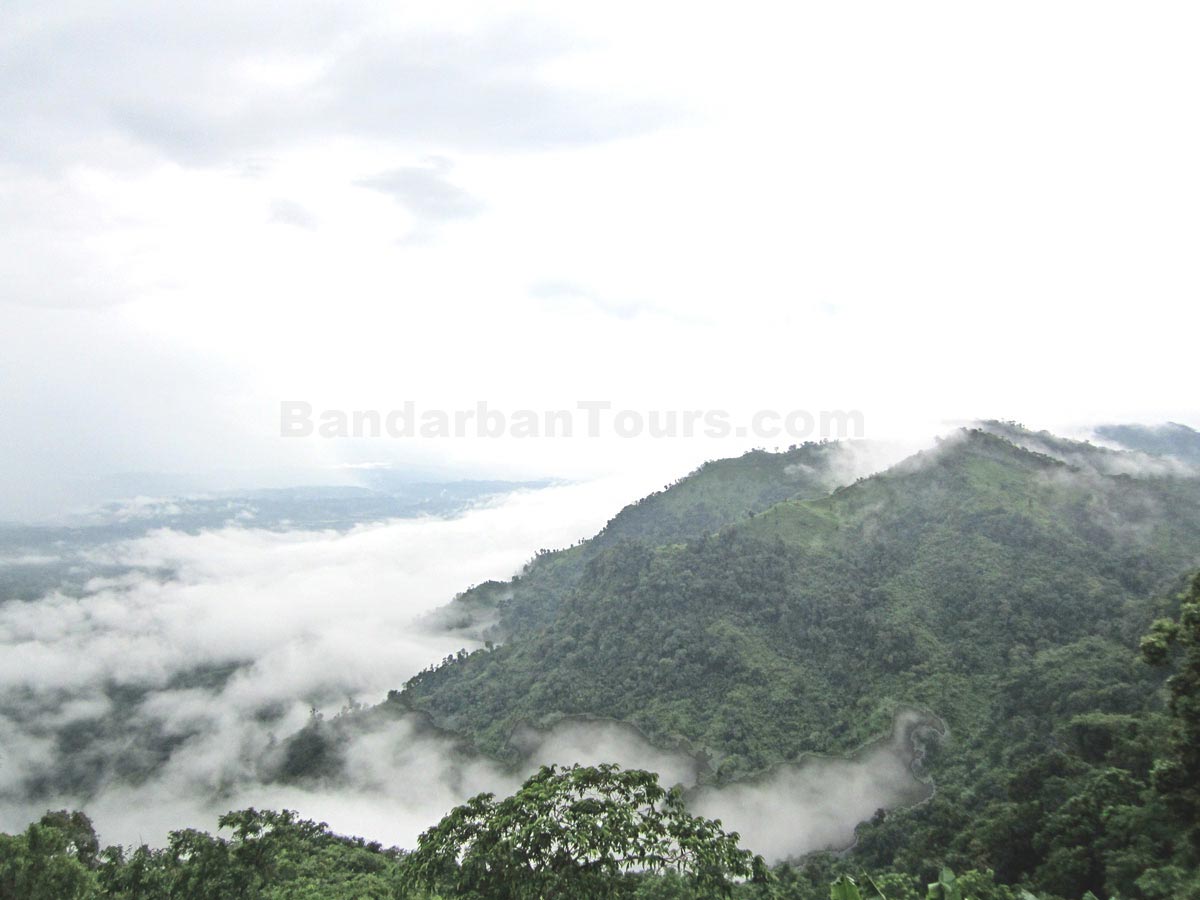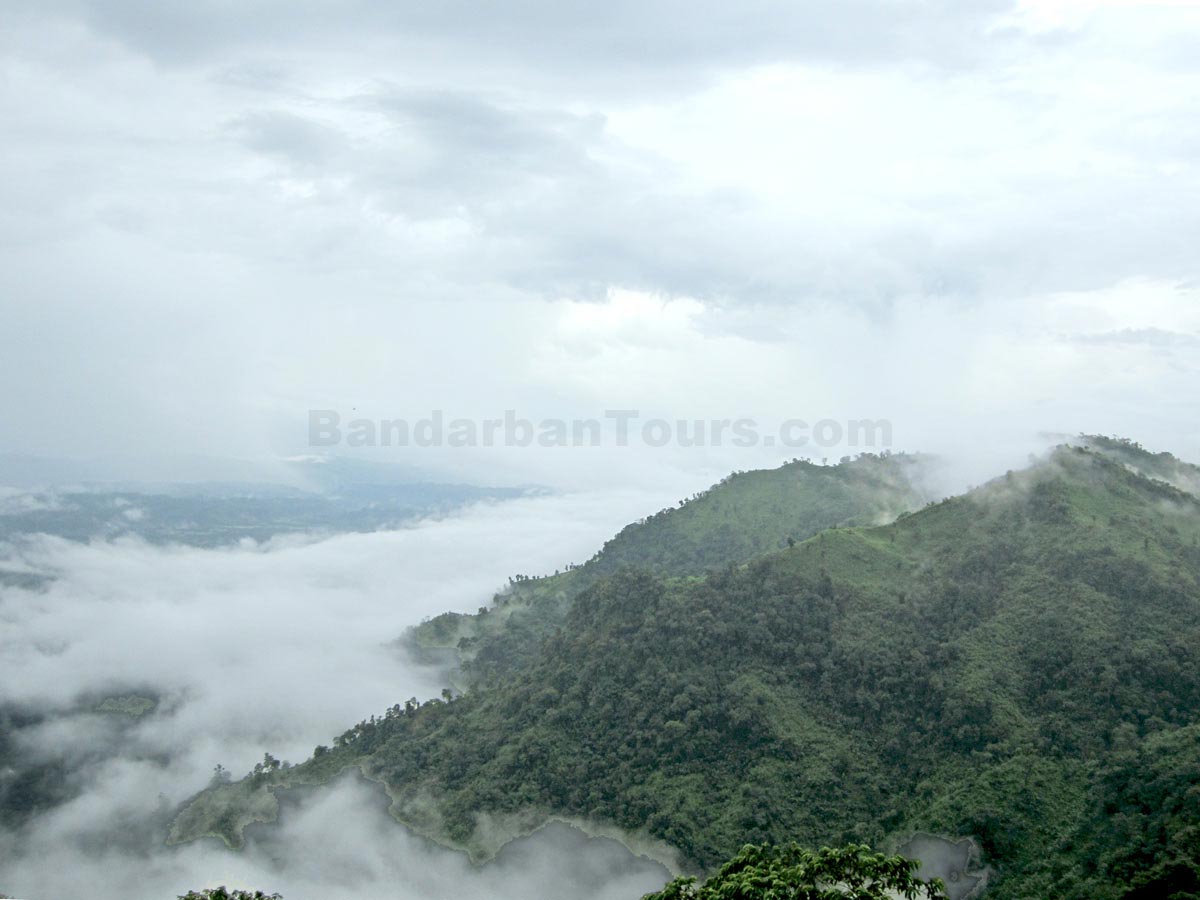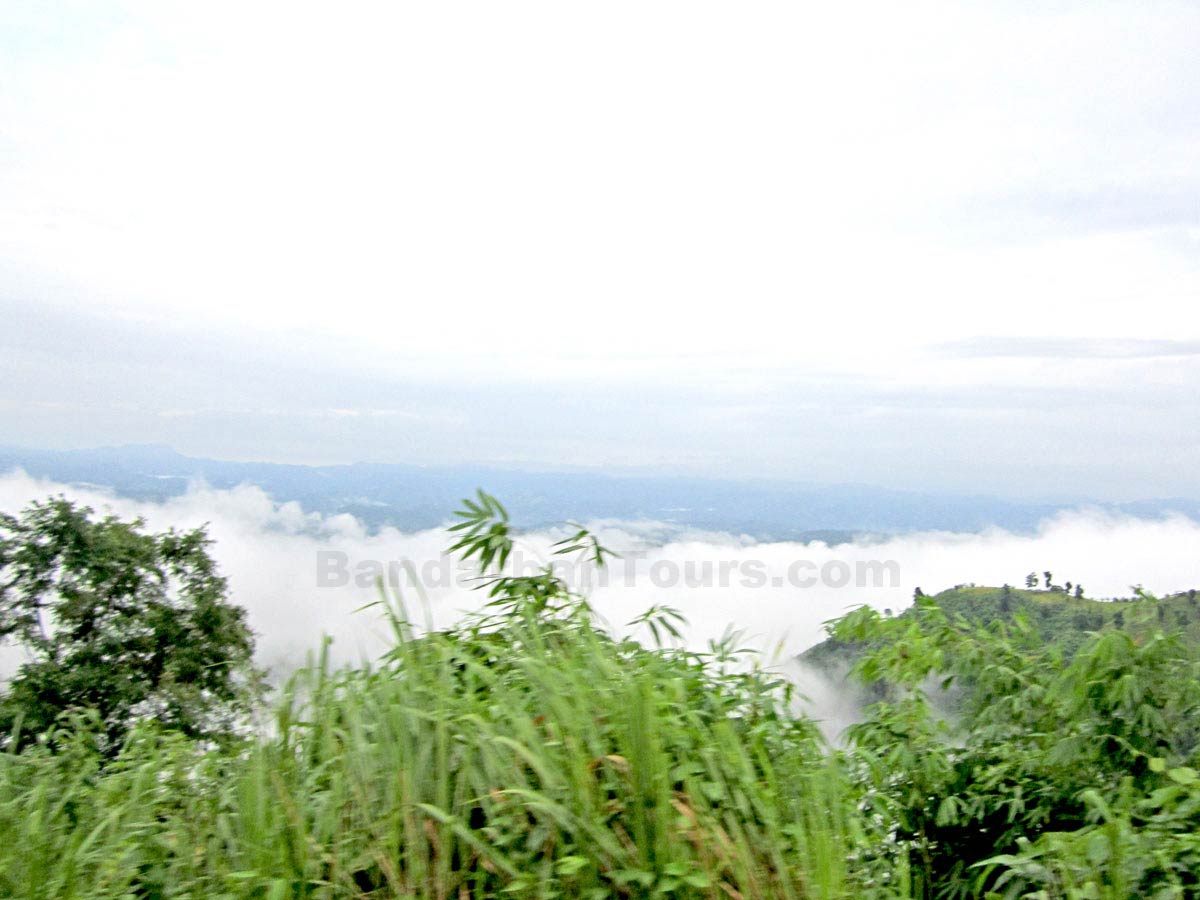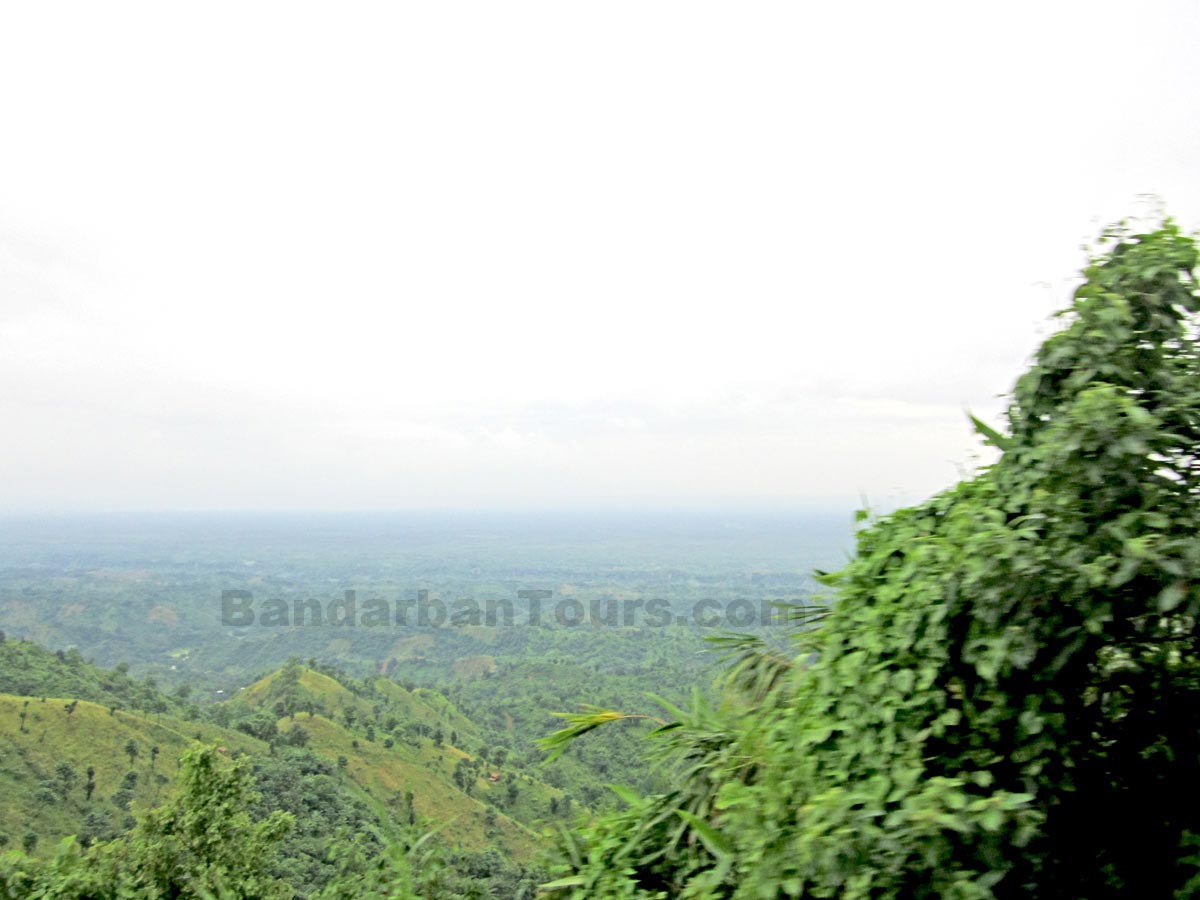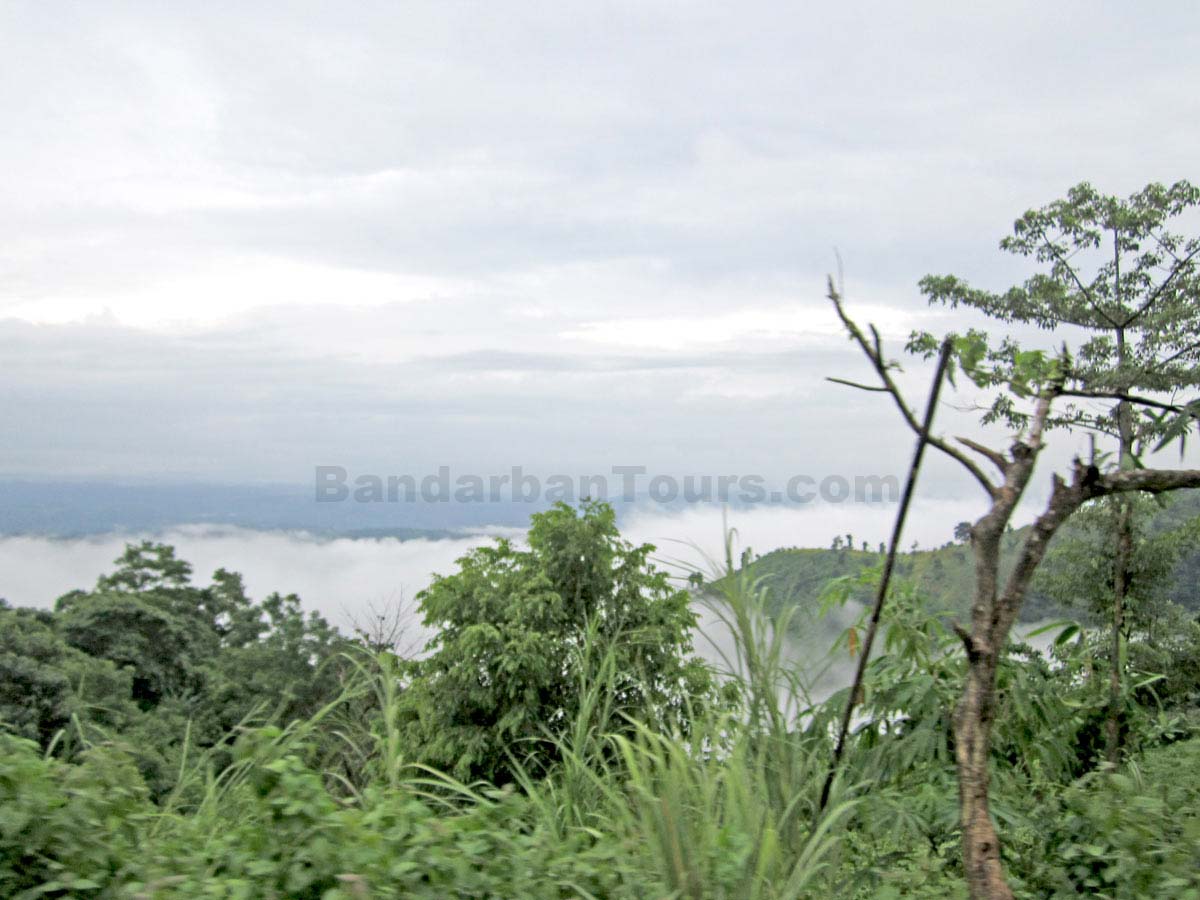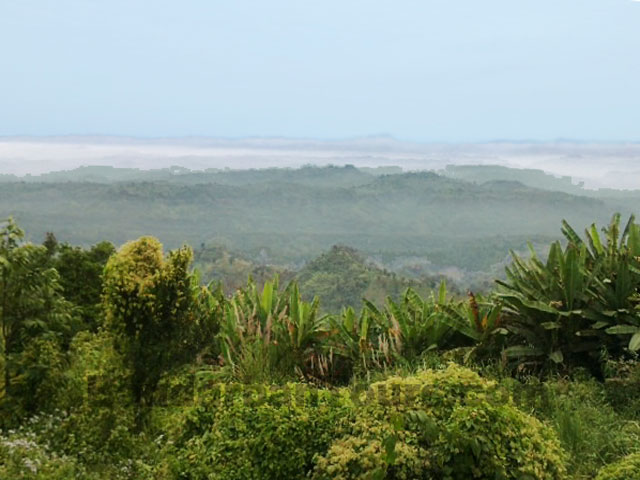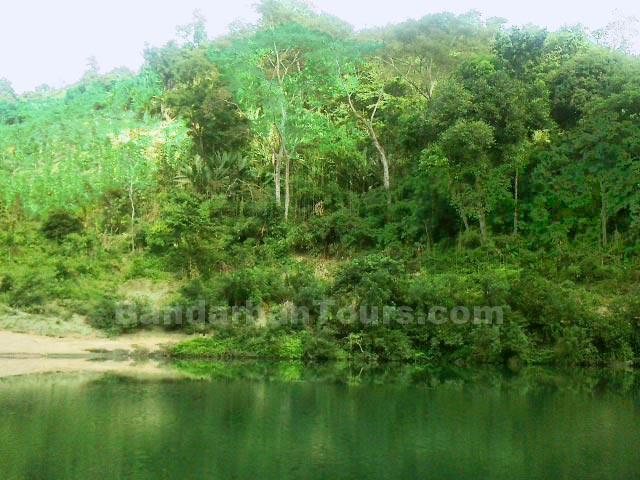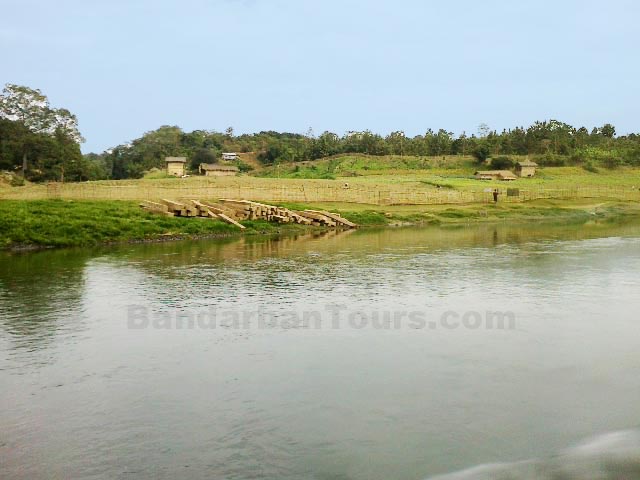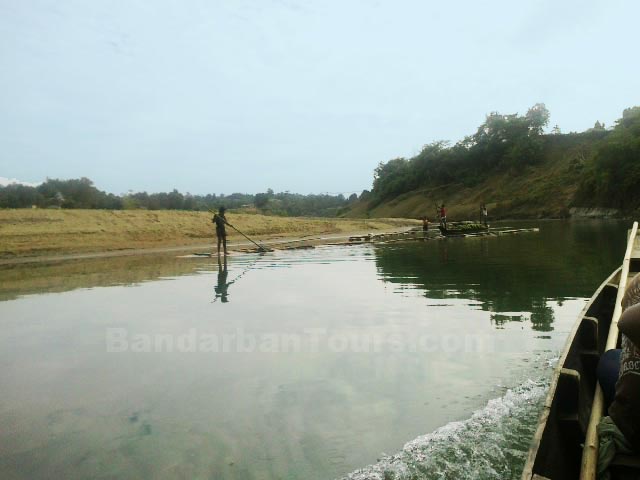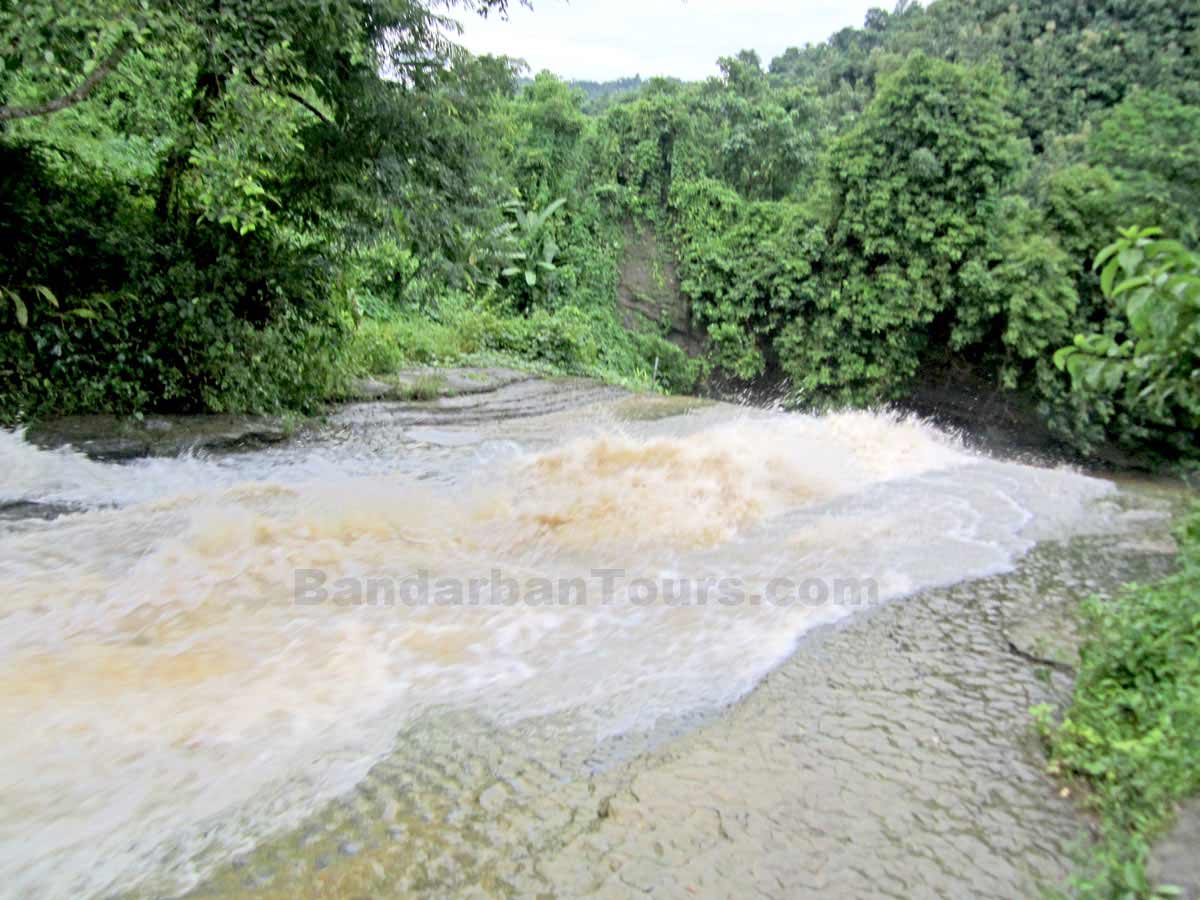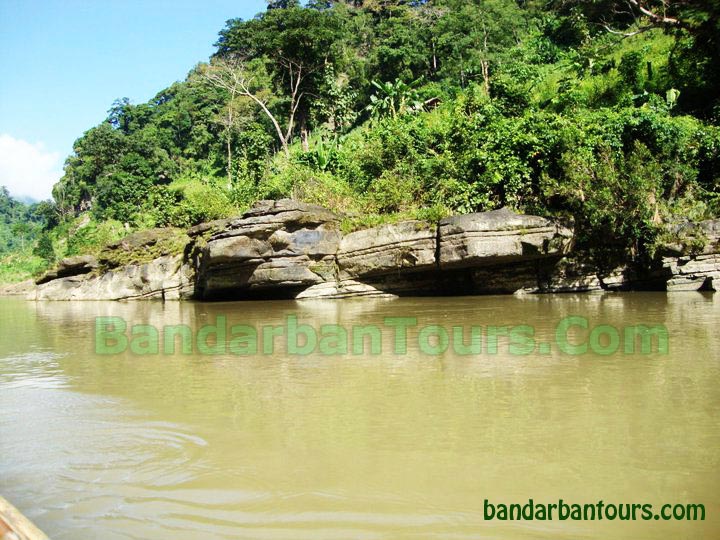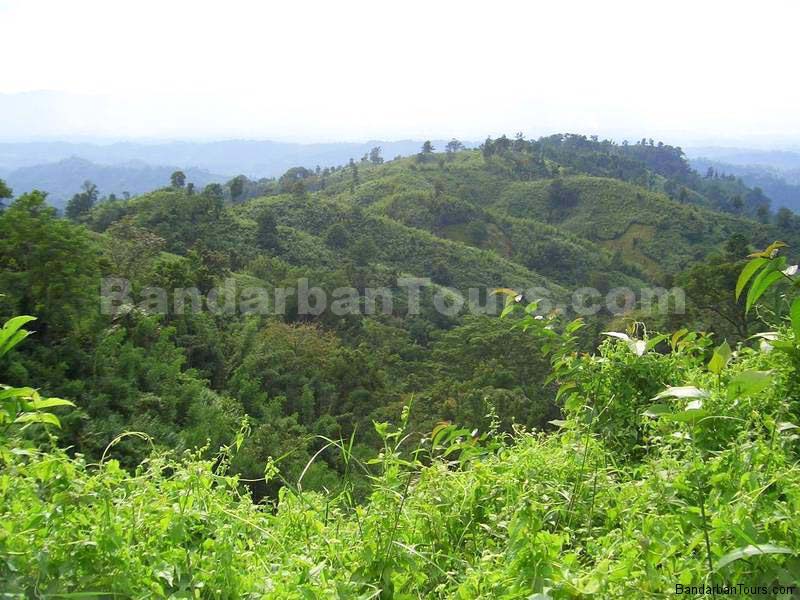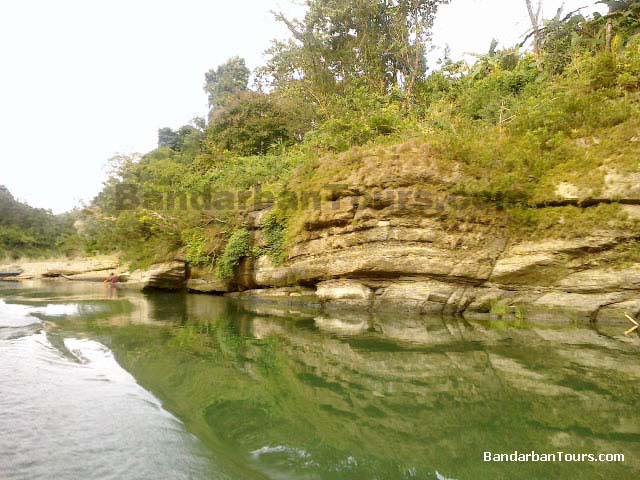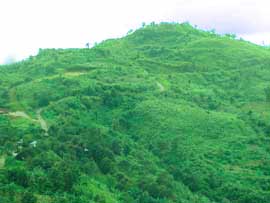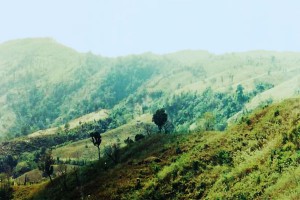Bangladesh tourism guide
Etymology of Bengal:
The exact origin of the word
Bangla or Bengal is unknown. According to Mahabharata, Purana, Harivamsha Vanga was one of the adopted sons of King Vali who founded the Vanga Kingdom
The earliest reference to "Vangala" (
Bôngal) has been traced in the Nesari plates (805 AD) of Rashtrakuta Govinda III which speak of Dharmapala as the king of Vangala. Shams-ud-din Ilyas shah took the title "Shah-e-Bangalah" and united the whole region under one government for the first time
The Vanga Kingdom (also known as Banga) was located in the eastern
part of the Indian Subcontinent, comprising part of West Bengal, India
and present-day modern Bangladesh. Vanga and Pundra were two dominant
tribes in Bangladesh in ancient time. The Hindu epic Mahabharata
mentions that the Vanga and Pundra kings took part in the battle of
Kurukshetra. Kouravas and Pandavas fought this battle near Delhi about
three thousand years back.
Historical places of Bangladesh:
Historical pictures are very popular
in everywhere. Many people are collect ancient historical pictures.
Tourists are like to go historical places. We learn loots from history.
Very famous historical architectures are Agra Tajmahal, Great Wall,
Colosseum in Italy, Egyptian Pyramid, Eifel Tower of France etc. Here
you can see the historical place picture of Bangladesh, Nepal, India,
Pakistan and China. It is not possible for everyone to go every
historical place. But we see historical place pictures from website. It
is quite easy. But if you able to go historical place, you should go
there.
Bangladesh
has long history and many places are famous as historical places. such
as Sixty Dome Mosque, Ahsan Manjil in Dhaka, Buddsist Temple
in Bandarban, Chakma Temple
in Rangamati, Chhoto Shona Mosque in Chapi Nawabgaong, Dhanbari
palace in Tangail, Golden Temple in Rangamati, Kushumba Mosque in
Naogaon, Lalbag Fort in Dhaka, Maharajas Palace in Natore, Paharpur at
Naogaon, Rani Bhabani Palace in
Natore, Siva Temple at Rajshahi, Tajhat Rajbari at Rangpur, Star Mosque at Dhaka and Padma River in all over the Asia But Big bank at lowhojong, munshigon, Dhaka.
National Memorial
National Martyrs Memorial
National Martyrs' Memorial is a monument in Bangladesh. It is the
symbol of the valour and the sacrifice of those killed in the Bangladesh
Liberation War of 1971, which brought the independence of Bangladesh
from Pakistani rule. The monument is located in Savar, about 35 km
north-west of the capital, Dhaka. It was designed by Syed Mainul Hossain.
---------------------------------------------------------------------------------------------------------
National monument
Dhaka Shaid Minar
The
Shaheed Minar
is a national monument in Dhaka, Bangladesh, established to commemorate
those killed during the Language Movement demonstrations of 1952.
On February 21, 1952, dozens of students and political activists were
killed when the Pakistani police force opened fire on Bengali protesters
who were demanding equal status to their native tongue, Bangla. The
massacre occurred near Dhaka Medical College and Ramna Park in Dhaka. A
makeshift monument was erected on February 23[1] by students of
University of Dhaka and other educational institutions, but soon
demolished on February 26 by the Pakistani police force.
The Language Movement gained momentum and after a long struggle, Bangla
was given equal status as Urdu. To commemorate the dead, the Shaheed
Minar was designed and built by Hamidur Rahman, a Bangladeshi sculptor.
The monument stood until the Bangladesh Liberation War in 1971, when it
was demolished completely during Operation Searchlight. After Bangladesh
gained independence, it was rebuilt.
At present, all national, mourning, cultural and other activities
occurred each year regarding 21 February is centered around the Shaheed
Minar.
------------------------------------------------------------------------------------------------------
Ahsan Manzil
Ahsan Manzil
Ahsan Manzil
Ahsan Manzil
Ahsan Manzil
Ahsan Manzil
Ahsan Manzil
Ahsan Manzil
Ahsan Manzil, Dhaka – Historical & tourist Place in Bangladesh
Built in 1872 and standing on the river Buriganga, this stately
building offers the visitors a feeling of the life-style of the Nawabs
of Dhaka. Sometimes known as the Pink Palace, this building now houses a
splendid museum. Basically, it was the residence of the Nawabs. Nawab
Abdul Gani renovated this building in the year 1872 and named it after
his son Khaza Ahasanullah. On the bank of river Buriganga in Dhaka the
Pink majestic, Ahsan Manjil has been renovated and turned into a museum
recently. It is an epitome of the nation’s rich cultural heritage.Based
on an access of 1 meter, two-story alcazar measures 125.4m by 28.75m.
The acme of the arena attic is 5 meters, and the aboriginal attic of 5.8
meters. There are columns of the acme of the arena floor, both arctic
and south ancillary of the castle. A ample accessible stairway
bottomward from the south portico, boarded the river through the
advanced yard.
Ahsan Manzil, an architectural gem, is
attestant to abounding actual contest of Bangladesh. The aftermost
allotment of the 19th aeon until the aboriginal years of Pakistan,
Muslim leaders of East Bengal emerged from the palace. Nawabs of Dhaka
acclimated to do business actuality in cloister as arch of the Panchayet
(village council) every day. Abounding anti-Congress affairs were
captivated in the Nawab of Ahsanullah condescension, a allegiant apostle
of the Muslim identity. Almost all the viceroys, governors and abettor
governors of British India visited Dhaka spent some time at the Ahsan
Manzil.
Constraction of the architecture was started in 1859 and ends at 1872.
Abdul Ghani called it Ahsan Manzil afterwards his son Nawab Khwaja
Ahsanullah. The anew congenital alcazar aboriginal came to be accepted
as the Rang Mahal. On April 7, 1888, a tornado acquired astringent
accident to Ahsan Manzil — Andar Mahal, the earlier allotment of the
palace, was absolutely devastated. During the about-face of the Andar
Mahal a acceptable allotment of the alcazar was overhauled and repaired,
and the admirable arch of the present Rang Mahal was added. Ahsan
Manzil was afresh damaged by an convulsion in 12 June 1897 and afresh
repaired by the Nawab Ahsanullah.
Location:
Ahsan Manzil is Kumartoli, Shakara Waiz Ghat Bazar Old Dhaka. And
‘Sutrapur Thana under Dhaka City Corporation. Ahsan Manzil palace was
the residence of the Nawabs but is now a museum. An influential family
in the old Dhaka Nawabs lived for many years. They built a magnificent
building, a living wage. Ahsan Manzil is one of them.
Visiting Hours & Holidays:
April to September:
Saturday to Wednesday : ( 10.00 AM – 18.00 PM)
October to March:
Saturday to Wednesday : ( 9.00AM-17.00PM)
Friday: (3.00 PM-8.00PM)
Holidays: Thursday and government holidays.
Telephone: 7391122, 7393866
--------------------------------------------------------------------------------------------------------

Dhaka University
The
University of Dhaka is the oldest university in Bangladesh. It is a
multi-disciplinary research university and is among the top universities
in the region. Established on July 21, 1921, as per the Government of
India Act, 1920, it was modelled on the Universities in England and soon
gained prominence. Students and teachers of this university have played
a major part in shaping the history of Bangladesh.
From its inception, the University of Dhaka has been a place for many
great scholars and scientists. From 1926 - 1945 the renowned physicist
Satyendranath Bose served as a professor. It was during this period that
he published his famous papers in collaboration with Albert Einstein,
most notably defining Bose-Einstein condensate. After independence from
the British Empire in 1947 it gained prominence as the leading
university in East Pakistan.
The university was witness to another historical event, as it was in the
campus of Dhaka University that the original flag of Bangladesh was
unfurled for the first time, at a time of national crisis with the
Bangladesh Liberation War looming closer.
------------------------------------------------------------------------------------------------------

Dhakeshwari-National-Temple
The
Dhakeshwari temple was built in the 12th century by Ballal Sen, a king
of the Sena dynasty, and many say the name of the city was coined after
this temple. The current style of architecture of the temple cannot be
dated to that period because of numerous repairs, renovations and
rebuilding in its long years of existence and its present condition does
not clearly show any of its original architectural characteristics. It
is considered an essential part of Dhaka's cultural heritage. Many
researchers say that the temple is also one of the Shakti Peethas, where
the jewel from the crown of the Goddess had fallen. Although there is
not enough historical context in order to establish this as a fact,
researchers were directed to this site while trying to locate the
particular Shakti Peetha. Since ages, the temple has been held in great
importance. The original 800-year old statue was destroyed during the
War of 1971. The temple was further damaged during the riots of 1989/90.
-------------------------------------------------------------------------------------------------------
Lalbagh-fort-Dhaka-Bangladesh
Lalbagh
Fort (also known as "Fort Aurangabad") is an
incomplete Mughal palace fortress at the Buriganga River in the
southwestern part of Dhaka, Bangladesh. Construction was commenced in
1678 by Prince Muhammad Azam during his 15-month long vice-royalty of
Bengal, but before the work could complete, he was recalled by
Aurangzeb. His successor, Shaista Khan, did not complete the work,
though he stayed in Dhaka up to 1688. His daughter Iran Dukht nicknamed
Pari Bibi (Fairy Lady) died here in 1684 and this led him to consider
the fort to be ominous.
Lalbagh Fort is also the witness of the revolt of the native soldiers
against the British during the Great Rebellion of 1857. As in the Red
Fort in India, they were defeated by the force led by the East India
Company. They and the soldiers who fled from Meerat were hanged to death
at the Victoria Park. In 1858 the declaration of Queen Victoria of
taking over the administrative control of India from the Company was
read out at the Victoria park, latter renamed Bahadur Shah Park after
the name of the last Mughal Emperor who led that greatest rebellion
against then British empire.
------------------------------------------------------------------------------------------------------
60 dome mosque
The
Sixty Dome Mosque (Bengali: ষাট গম্বুজ মসজিদ Shaṭ Gombuj Moshjid) (more
commonly known as Shait Gambuj Mosque or Saith Gunbad Masjid) is the
largest historical mosque in Bangladesh and one of the most impressive
Muslim architectural structures on the Indian Subcontinent. The 'Sixty
Dome' Mosque has walls of unusually thick, tapered brick in the Tughlaq
style and a hut-shaped roofline that anticipates later styles. There are
actually seventy-seven (77) low domes arranged in seven rows of eleven,
and one dome on each corner, bringing the total to 81 domes. The
interior is divided into many aisles and bays by slender columns, which
culminate in numerous arches that support the roof.The mosque is
decorated mostly with terracotta and bricks.
----------------------------------------------------------------------------------------------------------
Balihati of Zamindar bari
Baliati
Zamindarbari is situated about 35 miles northwest of Dhaka and 5 miles
east of Manikganj district headquarters. There were two great periods of
palace construction in India: the first corresponded to the period of
Mughal supremacy from the mid-16th century to the mid-18th century and
the second to the British Raj.
In
both cases, the provision of an overriding central authority kept
rulers in check and accelerated the growth of a provincial elite who
gained both power and prestige as local representatives.
During
the post-Mughal period, the British weren't the only ones who were
changing the construction style. Magnificent palaces were also being
built by local feudal chiefs -- Zamindars -- in a style to which was
unique in the history of Bengal architecture. The families like Rags of
Taras (Pabna), Mitras of Sitlai (Pabna), Chakrabartis of Balihar, Rags
of Dubalhati (Naogaon) and Sahas of Baliati (Manikganj) were all
Zamindars.
Bangladesh jatia Sangsad bhaban
Although
entrance to the Bhaban, the Main Building, is limited to authorized
members of Parliament and staff, the Jatiyo Sangshad complex is open to
visitors. On the North of complex, across the Lake Road, is Crescent
Lake and Zia Uddan (also called Chondrima Uddan). The two complexes
together form a major attraction for tourists in Dhaka. The complexes
are popular among joggers and skaters of Dhaka. The official Prime Minister's Residence
is on the North West corner of the Mirpur Road and Lake Road crossing
and is a five minute walk from the Jatiyo Sangsad Bhaban. The area is
one of the higher security zones of Dhaka.The Complex can be accessed
using any of the four roads surrounding it, however, the Manik Mia
Avenue and Lake Road are the easiest approaches.
----------------------------------------------------------------------------------------------------------


 |
| The golden temple at Bandarban Bangladesh |
 |
The Bandarban Golden Temple Bangladesh
|
Most
would suggest Thailand if asked to say where this magnificent temple is
to be found. They would be wrong. It is, in fact, in Bandarban area of
the ‘Hill tracts’ in east Bangladesh. And Bangladesh is surprisingly,
where some of the most notable Buddhist sites in South Asia are to be
found.
From
the world heritage site of South Asia’s largest vihara at Paharpur,
through the Ancient City site of Mahasthanghar that was obviously an
early Buddhist convert, to at least three other major sites in
Comilla,and North Bengal, there is much to visit and see of the past and
present of this, one of the world’s great religions.
Across
the ‘Hill Tracts’ and along the eastern coastal area there are still
many, mostly small, and some ancient, temples and monasteries.A few of the latter are wooden structures, in the style of local house building, including the one in the heart of Cox’s Bazaar.
Bangladesh,
a largely Sunni Muslim Islamic nation, with a history of art visible in
so many of its ancient mosques, was founded on a secular constitution.
It is rich in historic places of worship and study of all major
religions, bearing testimony to its rich and diverse past. And religious
tourism is welcome .

sangu river (Picture taken from sangu bridge) Bandarban Bangladesh.
View of lush green Bandarban hills and valley
The Buddhist temple is known in local language as
Kyang. It is located in the remote
Bandarban Hill District in South-Eastern Bangladesh, which is part of the
Chittagong Division of
Chittagong Hill Tracts.
The temple is ensconced in the hill town of Bandarban, which has two of
the highest peaks with rolling hills, namely, the Tajingdong (4,000
feet (1,200 m)) and the Keokeradong (4,632 feet (1,412 m)) covered with
dense forests with lush vegetation. Sangu river flows through the town.
There is also a waterfall nearby. The temple is built on top of a 60
metres (200 ft) high hill, which is about 4 kilometres (2.5 mi) from the
Balaghat town, and 10 kilometres (6.2 mi) from the Banderban city.
Chittagong, known as a "picturesque part of Bangladesh that is referred
to as the rooftop of the country", is about 92 kilometres (57 mi) away.
Within the Bandarban town, the notable structures are the Tribal
Cultural Institute and a Museum.
[ There is also a lake on the hill known as the Debota Pukur (meaning:"pond of the God").

View of lush green Bandarban hills and valley
The Buddhist temple is known in local language as
Kyang. It is located in the remote
Bandarban Hill District in South-Eastern Bangladesh, which is part of the
Chittagong Division of
Chittagong Hill Tracts.
The temple is ensconced in the hill town of Bandarban, which has two of
the highest peaks with rolling hills, namely, the Tajingdong (4,000
feet (1,200 m)) and the Keokeradong (4,632 feet (1,412 m)) covered with
dense forests with lush vegetation. Sangu river flows through the town.
There is also a waterfall nearby. The temple is built on top of a 60
metres (200 ft) high hill, which is about 4 kilometres (2.5 mi) from the
Balaghat town, and 10 kilometres (6.2 mi) from the Banderban city.
Chittagong, known as a "picturesque part of Bangladesh that is referred
to as the rooftop of the country", is about 92 kilometres (57 mi) away.
Within the Bandarban town, the notable structures are the Tribal
Cultural Institute and a Museum.
There is also a lake on the hill known as the Debota Pukur (meaning:"pond of the God").
Buddhism in Bangladesh
 |
|
 |
Left: A close view of the Golden temple. Right: Ven. U Paññya Jota Mahathero founder and chief priest of the temple
|
Bandarban has a large ethnic population of
Buddhists.
Buddhism is practiced by a small percentage of 0.7 in Bangladesh which is predominantly an
Islamic
country. Buddhism is the third largest religion in Bangladesh and the
practice is of Theravada Buddhism; most Buddhists are from the
south-eastern district of
Chittagong and Chittagong Hill Tracts.
[5][7][8]
In Bangladesh, the Theravada Buddhism, now practiced as "Sangharaj
Nikaya", was introduced in the late 19th century, replacing many of the
old forms of Buddhism practiced till then. The credit for this is given
to Ven. Saramedha, known popularly as "Sangharaj".
[9]
The ethnic population of the town belongs mostly to
Marma, a tribal group of the Chittagong hill region on the eastern end of the country, also known as
Magh. They are of
Arakanese descent and Buddhists by religion, and are the second largest ethnic tribal group in the hill districts of Bangladesh.
Ven. U Paññya Jota Mahathero is the founder and chief priest of the
temple. He belongs to Royal Bohmong family of Bandarban. He is a
Theravada monk since 1991. He had served the
Government of Bangladesh
for 8 years as a Senior Assistant Judge. The Buddha’s Dhatu (relic),
which is enshrined in the temple, was a gift given to Ven. U Paññya Jota
Mahathero in 1994 by the
State Sangha Maha Nayaka Committee of
Myanmar.
Architecture
Approached by an elegant stairway, the impressive temple built on the
hill top is decorated with exquisite sculptural images. Apart from the
second biggest Lord Buddha statue enshrined in the sanctum, there are
smaller statues and a golden bell set on a dragon within the temple
precincts. Construction of the temple was started in 1995 and completed
in 2000. The
dhatu,
the corporeal relics of Buddha, has been enshrined here below four
statues of Buddha. The dhatu is enshrined here, with the basic belief
among Buddhists that it provides for peace of mind and happiness. The
temple now forms a part of the Tourism Development Project of the
'Buddhist Circuit Tour' that is sponsored by the South Asia Sub regional
Economic Cooperation.
[3][5]
A strict dress code of 'no shorts and no shoes' in temple precincts is followed here.
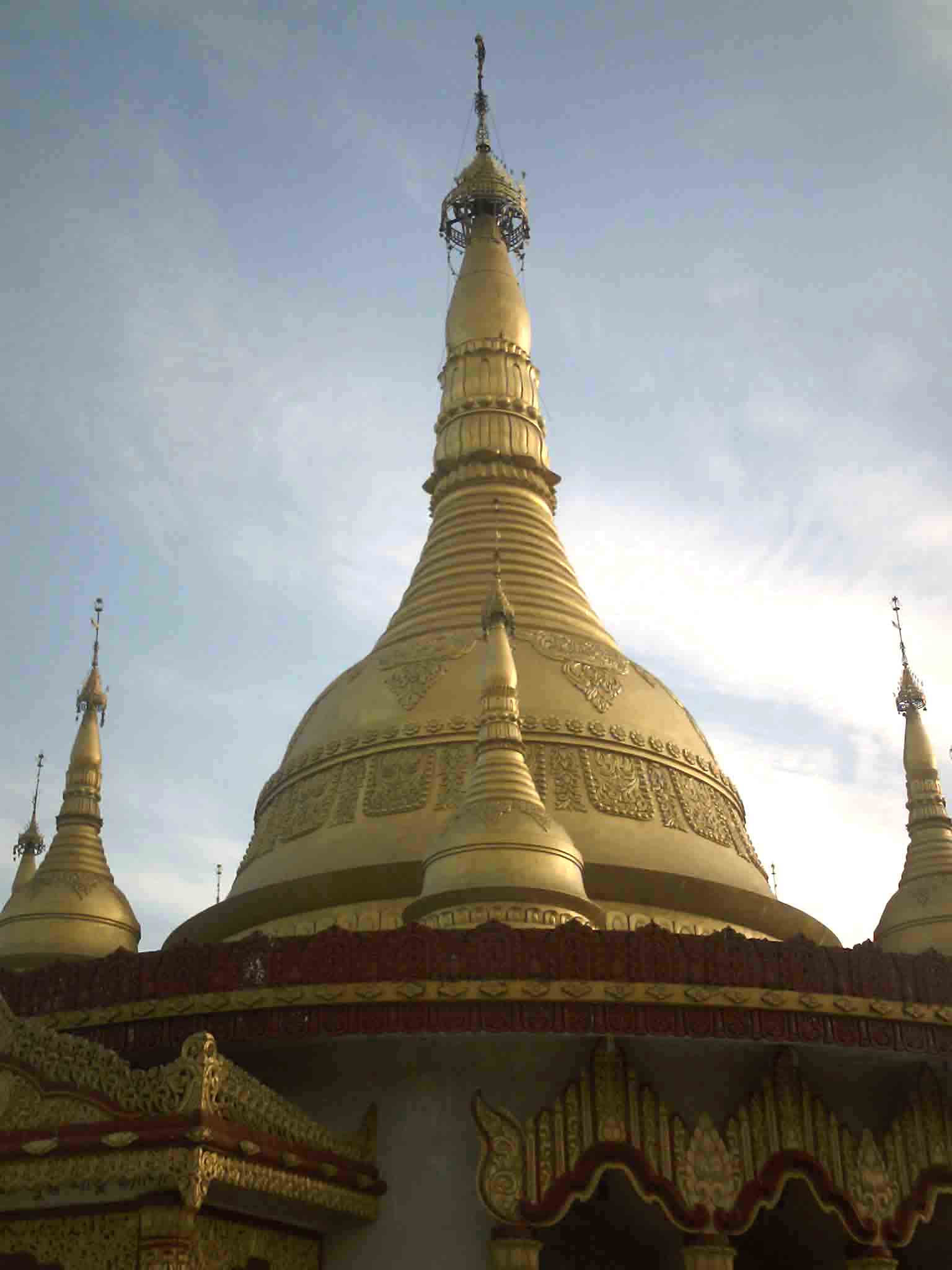
Golden temple bandarban. bangladesh.
------------------------------------------------------------------------------------------------------
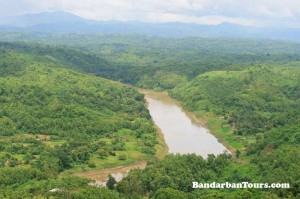
Chimbuk Hill
About Chimbuk hill
Chimbuk hill is the third highest mountain in Bangladesh. Chimbuk is
one of the most familiar tourist spot in Bandarban. It is just 26
kilometer away from Bandarban sadar. Chimbuk hill is about 2500 feet
high above sea level. The road of this area is zigzag. So if you ride in
a jeep it will be charming. While your jeep is moving through the
various indigenous villages, their simplicity in human gestures will
compel you to think about our predecessors struggles to cope with to
maintain existence. They are as simple as nature. However when you are
looking down from Chimbuk, it will get you the feelings of floating over
the clouds. When it is a shiny day, you can see the shades of clouds
over the hills. The huge horizon of zigzag hills seem waves of a see.
You will also see the beauty of Chimbuk and Nilgiri.
- See more at: http://www.bandarbantours.com/chimbuk-hill/#sthash.BdDTh8Cr.dpuf

Chimbuk Hill
About Chimbuk hill
Chimbuk hill is the third highest mountain in Bangladesh. Chimbuk is
one of the most familiar tourist spot in Bandarban. It is just 26
kilometer away from Bandarban sadar. Chimbuk hill is about 2500 feet
high above sea level. The road of this area is zigzag. So if you ride in
a jeep it will be charming. While your jeep is moving through the
various indigenous villages, their simplicity in human gestures will
compel you to think about our predecessors struggles to cope with to
maintain existence. They are as simple as nature. However when you are
looking down from Chimbuk, it will get you the feelings of floating over
the clouds. When it is a shiny day, you can see the shades of clouds
over the hills. The huge horizon of zigzag hills seem waves of a see.
You will also see the beauty of Chimbuk and Nilgiri.
- See more at: http://www.bandarbantours.com/chimbuk-hill/#sthash.BdDTh8Cr.dpuf
100000 YEAR OLD FOSSILS DISCOVERED IN BOGRA Bangladesh.
Photo Credit: Geological Survey Of Bangladesh
Scientists have discovered 100,000 year old mammal fossils
for the first time inBangladesh. The discovery was made during a survey
conducted by the Department of Geological Survey of Bangladesh (GSB) underneath
the Nagor riverbed in the Dhupitila formation which is situated at a place
called Nandigram in Bogra district in Northwest bangladesh.
In a workshop “Chalanbil Geological Patterns in Quaternary Period”
held in the GSB seminar room, Deputy Director Abdul Baki Khan Majlish,
confirmed this very important discovery.
He explained the relation between geological condition and
stratigraphic patterns during the Ice age in Chalanbil Delta. He also claimed
that the newly found fossil draw a parallel link between Indian sub continental
petrography and recent petrographic formation of Bangladesh.
Dr. Sirajur Rahman Khan Director General of the Geological
Survey of Bangladesh said that the preliminary finding of geologists is that
the fossils are of elephant and Rhinoceros.
He also informed that the GSB started “Integrated Geological
Mapping of the Chalanbil Area to Unveil the Quaternary Records and Climatic
Changes (July 2010-June, 2013)” in Chalanbil area. Main objectives of the
programme are to unveil evolutionary history, reconstruct Paleoclimatic
history, construct Quaternary stratigraphy of this region, identification of
hazardous elements, neotectonic study, hydrogeological study, land use planning
and to identify deposits of mineral resources.
Foreign visitor arrivals in 2007-2008:
According to statistics of the country's National Tourism Authority
(NTA), a total of 349,837 foreign tourists visited Bangladesh in 2008,
about 21 percent higher than that in 2007.
Despite the rise in number of tourists' visits, the incomes from the
tourism sector in 2008 came down to 4. 60 billion taka (about 65.7
million U.S. dollars) in 2008 from 5.27 billion taka (about 75.3 million
U.S. dollars) in 2007, the NTA figure showed.
Safety of tourists:
The lack of adequate security and poor infrastructure were largely
blamed for lower tourist arrivals in the country's many remote tourism
spots, which officials said virtually prompted the authorities to create
the new unit.DHAKA - Bangladesh has formed a new police unit to ensure
more protection for local and foreign tourists and tourism spots in the
South Asian country.
Shopping:
Bangladesh is indeed a shoppers' paradise with a rich tradition in
handicrafts at throw away prices. While muslin of ancient Dhaka has gone
into history, other products such as contemporary paintings, wood
works, shitol pati
(mats that feel cool), bamboo decoration pieces, cane and conch shell
products, gold and silver ornament, cotton, silk, gold, silver, jute,
reed, brassware, traditional dolls and leather goods also receive deep
appreciation of the lovers of arts and crafts now and over the past
centuries. In addition, Bangladesh is famous for pink pearl. Riffles Square, Jigatala Market, Bashundhara City, Mouchak Market, New Market, Pink City, Gulshan 2, Aponbazar Gulshan 1 Dhaka and the largest shopping mall of the Asia oand third laturgest in the world Jamuna future perk Etc.



